| Action: James playing catch with his friend Kevin
Dialogue: Sounds of running, laughter
Timing: 6-7 seconds
Camera Angle: MS
Props: --
Action: Kevin and James arguing
Dialogue: Fighting, saying not to talk to each other, crying
Timing: 10 seconds
Camera Angle: MCU
Props: --
| Action: Kevin pulls James' collar roughly during play
Dialogue: James shouting, Kevin saying sorry
Timing: 15 seconds
Camera Angle: BCU
Props: Shirt
|
| Action: James as a toddler playing in the park
Dialogue: General sounds of the park
Timing: 8 seconds
Camera Angle: LS, camera panning
Props: ball, park environment
Action: James playing with a new friend
Dialogue: Laughter, playing sounds
Timing: 7-8 seconds
Camera Angle: MLS
Props: ball
| Action: See James enjoying by himself, playing with a ball
Dialogue: James making a new friend in the park
Timing: 14-15 seconds
Camera Angle: CU
Props: Ball
|
| Action: Walking towards Baby James in his crib
Dialogue: No dialogue
Timing: 5 Seconds
Camera Angle: LS
Props: --
Action: Focus on the baby's face to show innocence and joy
Dialogue: --
Timing: 3-4 seconds
Camera Angle: CU
Props: Toys, crib
| Action: Close up of Baby James and him playing with his mother.
Dialogue: Baby James' mother talking to him
Timing: 8-9 seconds
Camera Angle: MLS
Props: Toys
|

This is the mood board for our video for the group assignment. It depicts the different interpretation of the concept of "PLAY" by us at different stages of our life. The overall color scheme shows the progression of life in-spite of the ups and downs in life.
Other components have been explained in either the Synopsis or Treatment.
Pranjal Jain
| The film begins by showing baby James in his crib, playing with his toys and his mother – an atmosphere of innocence and contentment is projected, along with happiness. The scene will therefore, focus on how a baby’s play is carefree, without any worries or apprehension, naiveté embodied.
The underlying theme of this scene is Innocence. | First scene: Infant stage
Characters: Baby James, James’ mother.
Location: Baby’s room.
Props: Baby toys, crib.
| | The next sequence takes us into the perspective of toddler James, whose understanding of play has become more complex, and therefore incorporates more intricate toys like tricycles, swings and see-saws. The toddler has also lost the naiveté of a baby, causing a tiny hint of cautiousness to enter their perception of play, which is augmented by James’ parents, as they are worried about him being hurt while playing. Ultimately, a feeling of growth, wonderment and progress will pervade this scene – it is all about him finding his way in the world, as he moves into the preteen stage.
The main theme here is Growth.
| Second scene: Toddler stage
Characters: James as a toddler, James’ parents.
Location: Playground
Props: Children’s toys.
| | The third scene shows us how play is perceived by preteens; by now, cautiousness has developed into a budding desire to not lose. This scene will show the viewer how James and Kevin play with each other, and their game of tag eventually ends up in both not wishing to lose, as one accuses the other of cheating, which leads to a minor squabble. The atmosphere will be slightly tense – their squabble is not a full-blown fight, but it’s a hint of things to come as they grow up.
The theme here is Realization.
| Third scene: Preteen stage
Characters: James, a friend named Kevin.
Location: One of their houses/school.
Props: Undecided.
| | The fourth scene details how James approaches play in his teenage years, and the nature of this scene may be slightly more cynical – instead of having fun, good play is now defined by victory. It is no longer enough to just have an enjoyable game; for the teenager, a bigger imperative is to win. Therefore, this scene will show James playing video games in his room, and his desire for victory. A darker, brooding atmosphere should be prevalent, one that is markedly graduated from the previous scene.
The main theme is Cynicism.
| Fourth scene: Teenager stage
Characters: The teenage James.
Location: His/her room.
Props: Computer. | | This scene shows how James has now begun taking his competitiveness to a new level; instead of hiding his aggressiveness behind an online persona, he now shows it in real life – going out to a nightclub, he spots a girl and attempts to court her, only to find that another guy has his eyes set on her as well, causing the two to attempt outdoing the other throughout the entire night.
The theme for this scene is Competitiveness.
| Fifth scene: Young Adult stage
Characters: A slightly older James, a random woman and guy.
Location: Probably a nightclub.
Props: Glasses. | | We then come to the adult stage, and the situation hasn’t really gotten any better when compared to the last scene – now, almost nothing of the child remains in James. No longer does he play for fun; he plays to win, even more so than as a teenager, namely by taking bigger risks, as everything is now a rat race, a competition to see who finishes on top of the pile.
This scene will show the risk-taking of the adult and a ‘win at all costs’ mentality by having James take risks on the stock market and somehow managing to come out the victor. Play is no longer done just for the sake of it in this scene – play is engaged in, in order to come out with profits. This scene incorporates a fast, rapid tempo, suggestive of the adult rat race.
The main theme is Risk.
| Sixth scene: Adult stage
Characters: Adult James, unnamed stock broker
Location: Somewhere outdoors.
Props: Cellphone. | | This stage has everything begin to come full circle. Having retired (and thus left the cut-throat mentality of the rat race), the elderly James has begun to return to the carefree attitude that characterized his approach towards play as a baby; he will never truly regain all of that naiveté, but no longer will he perceive play as merely something to dominate and win at. This scene will thus show the elderly person playing chess (or any board game) with the young May, highlighting the contrast in mentalities. In the end, he will win through experience, which sets the stage for the final scene. | Seventh scene: Elderly person, part 1
Characters: A young child/teenager named May and the elderly James.
Location: A park.
Props: Chess board and pieces. | | After the game, the elderly James speaks to May, attempting to impart the wisdom he has gathered throughout his life, that the journey is oftentimes more important than the destination. A placid and calm atmosphere will be utilized here, with the feelings of innocence and peace from the first stage reappearing.
As this scene and the last are two parts of a whole, the main theme for both is Acceptance.
| Seventh scene: Elderly person, part II
Characters: A young child/teenager named May and the elderly James.
Location: A park.
Props: Chess board and pieces. |
 So lets talk about our minds for a second.Our minds are one of the most complex parts of our bodies. A human mind is more powerful than a supercomputer and still during exams, even if you dont remember the correct answer, your mind can remember the worst song you have ever heard and with perfect lyrics. So let me tell you how to remember better. MIND MAPS. Yup, don't cringe, I said it. Mind maps help the brain learn visually, instead of the repetitive reading and remembering.
Lets look at the mind map on the topic of PLAY. This method helps the mind understand the different branches of the topic at hand through the eye catching colors and images. The visually explaining process is helpful as our mind remembers the image of the information as well, when we try to recall the content and so makes it easier to reproduce the information.
Well, I see that you are back... Was my last post actually interesting or are you just bored ?? Playing around on the internet ??
So today I would like to talk about a baby's perception of " PLAY ". You could say " come on, it's just a baby. It can't even speak, let alone knowing about " PLAY ". " But that exactly is my point.
Whenever we see a baby, we immediately want to make it laugh or catch its attention. Its basic human nature. We are attracted to the innocence of someone who only recognizes visual interactions. We try to play the most common and effective game with them - The " Peek a Boo ". A baby doesn't recognize sometimes if it's mother is calling him but as soon as you do the whole " Peek a Boo " routine in front of it, more often than not it brings a smile to it's face. Also, for a baby anything is a toy. You must have noticed, if a baby is crying and you hand him anything that makes some kind of noise or moves, it immediately forgets everything else and becomes engrossed in it. Isn't that the definition of sports ?? You have to concentrate and be interested in whatever sport in the world you are playing, in order to excel in it and enjoy it.
We begin to grasp the concept of PLAY since the very beginning and slowly as we grow up, our conception of PLAY changes, to more suite our personality.For a baby anything in the world is a means of entertainment ( mostly by putting it in the mouth ), but it's the concept of PLAY or distraction that it understands the most easily.
Hope you didn't go to sleep like a baby there ( pun intended :D ). I will write again next week and will discuss the gradual change in the concept of PLAY as we grow up.
Till then " May the force be with you. "
 Let me ask you a question.... What comes to your mind when I ask you to think about PLAY ?? Your mind rapidly shows you different interpretations of it in a flash and finally you settle down on the one meaning that you are most familiar and comfortable with.
This is what I am gonna talk about in this series of blogs. I would like to explore the versatility of the word " PLAY ", how it changes nature in different situations and for different people, be they of different age, sex or profession. How it has such a positive influence on our attitude and health and what makes it such a vast topic to explore.
|
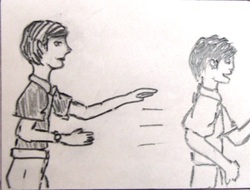


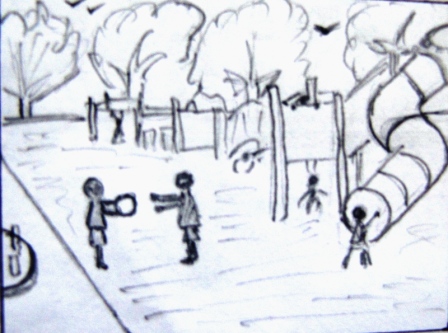
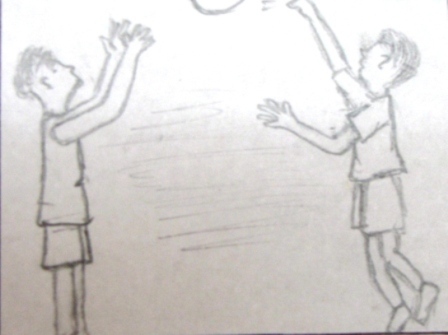
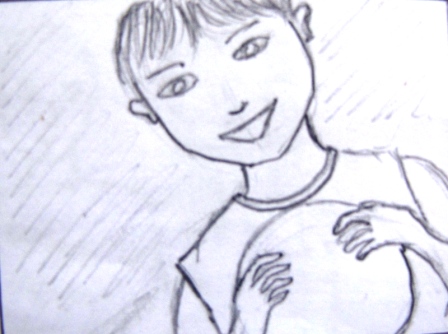
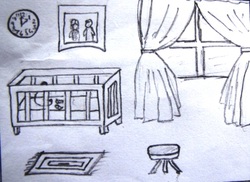
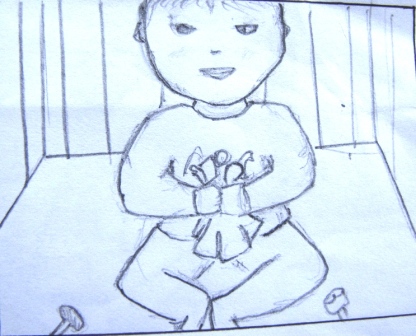
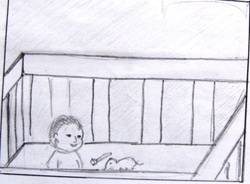




 RSS Feed
RSS Feed